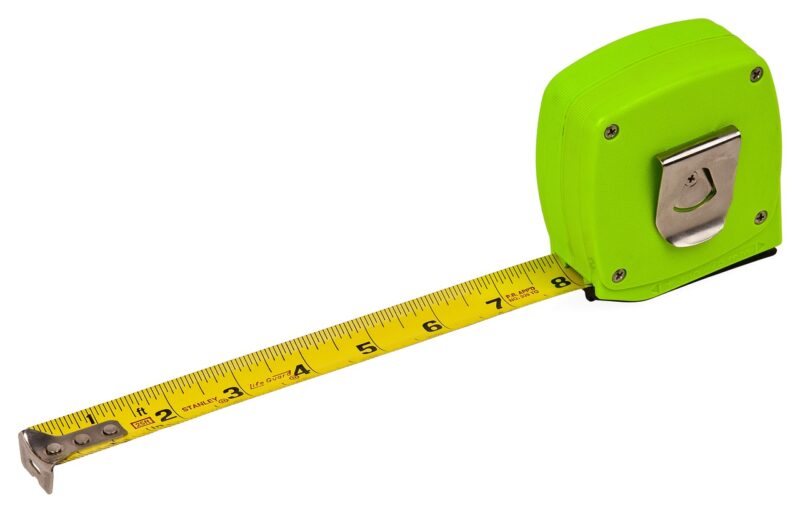The Day France Tried to Measure All Land Using a Single Unit: A Funny Metric Disaster
November 15, 2024

In the realm of scientific history, several events stand out as significant milestones, yet few are as comically entertaining as France’s ambitious attempt to standardize measurement. The story takes us back to a time when the Metric system was burgeoning, promising both efficiency and uniformity. However, on that fateful day, France discovered that standardization can sometimes lead to monumental gaffes. Forget about the legendary tales of scientific brilliance; this is a story of ambition, confusion, and hilarity.
1. The Birth of the Metric System
Before diving into the humor of this tale, it’s essential to understand the context. The metric system was born out of the French Revolution in 1795, aiming for a more democratic and rational system of measurement to replace the chaotic myriad of units that existed before.
France wanted a standard that could be easily understood, irrespective of regional dialects and variations. Thus was born the meter, based on an impressive celestial measurement: one ten-millionth of a quadrant of the Earth’s meridian.
Despite its noble intentions, the system faced the challenge of converting the entire country, if not the world, to a single standard. Could they do it? Oh, the hubris!
2. The Grand Experiment
In the late 18th century, as the metric system began to take root, French officials decided to implement a monumental project that soon spiraled into disaster. They aimed to measure all the land in France using a single unit of measure—the meter. The idea seemed simple enough initially.
Thus began the grand endeavor where teams armed with chains, leveling rods, and measuring tapes were dispatched across various terrains. They trekked through fields, surmounted hilltops, and braved marshes to measure the vast expanse of the French countryside. However, it became quickly apparent that simplifying measurement across diverse landscapes was an endeavor not for the faint-hearted—or the mathematically challenged!
3. The Hilarity of Miscalculations
What followed was a series of comedic errors and miscalculations that would make anyone chuckle. Here are some of the charming blunders that occurred during this nationwide measurement attempt:
- The Lost Meter: Many surveyors, armed with the newest unit of measurement, decided to measure everything with an enthusiastic flair. Unfortunately, some opted for a more flamboyant approach, leading to meters stretched to almost mythical proportions! Delighted locals often reported grassy knolls mistaken for mountains, and the entire project began to resemble a farcical treasure hunt.
- The Confusion with Local Units: In communities new to the metric system, locals were overwhelmed by the switch from miles and acres. This led to debates about whether a “meter” was longer or shorter than a “furrow length” (a local measurement). As tensions mounted, villagers began to jokingly define their full fields in terms of “two meters and a cow.”
- Converting the Inconvertible: The ambitious project aimed to convert the entirety of France to meters. However, no one had accounted for the wildly varying soil quality, terrain differences, and, most importantly, differing opinions on what constituted a “good plot of land.” This led to debates that would go down in history as mere ‘land squabbles,’ showcasing the French penchant for eloquence even when arguing about the worth of a potato field!
By the time the dust settled, France had measured thousands of hectares, but with a little accuracy and a lot of confusion. The results showcased some remarkably strange land measurements where provinces found themselves labeled with absurd titles!
4. The Legacy of Measurement Madness
Despite the hilarity that unfolded during the measurement project, it was not all laughable. Many lessons were drawn from the so-called ‘Metric Disaster.’ The systematic chaos of mismatched units and priorities encouraged a more refined approach to measurements in the following years.
Additionally, individuals in charge were compelled to return to the drawing board. While the project failed to yield the uniformity France had hope for, it laid the groundwork for further studies into how to measure land more accurately.
Ultimately, France learned that you can’t simply impose a single measurement on the varied landscape of human life, nor should you attempt to measure laughter—it’s far too individual, and perhaps that’s why it works best in units of joy!
5. Conclusion: The Lighter Side of Science
As we reflect on this humorous episode in history, it stands as a reminder that while ambition has its rewards, a sense of humor is equally vital. The tales of French officials mismeasuring land serve not only as a delightful history lesson but also as a gentle nudge for us to embrace mistakes, laughter, and the understanding that perfection is often more of a journey than a destination.
So, the next time you pick up a ruler or a measuring tape, remember this humorous escapade, and perhaps it’ll bring a smile to your face—the true standard of happiness.
Let’s celebrate our failings as an opportunity for laughter!






